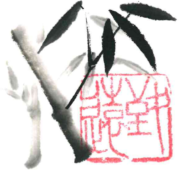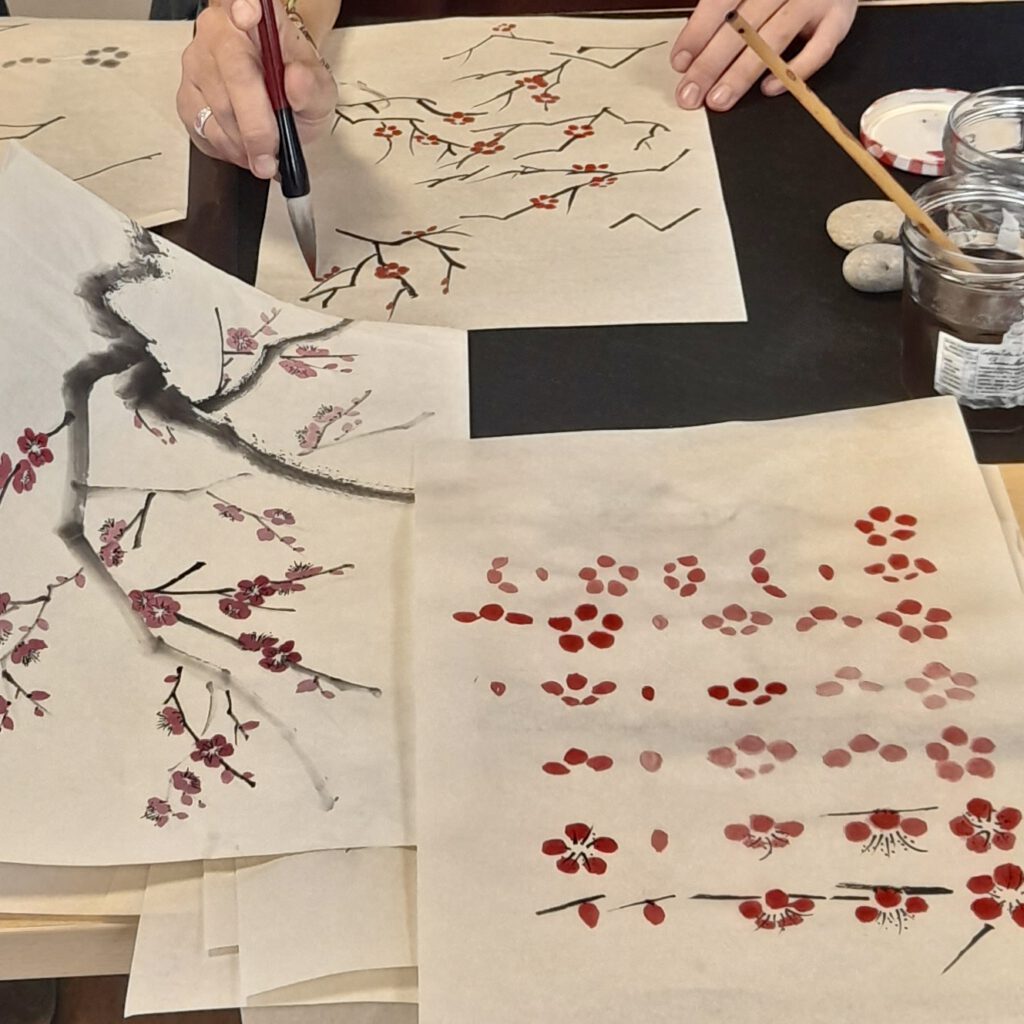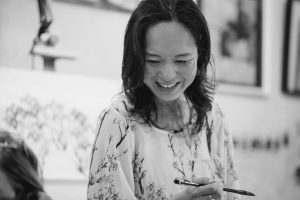Learning sumi-e—Japanese ink painting—is a path of personal and artistic discovery. However, many beginners become frustrated when their results do not reflect the harmony and fluidity they observe in the masters.
Sumi-e cannot be learned through technique alone: it requires attitude, breathing and awareness. In this article, you will discover the most common mistakes when starting out in sumi-e and how to avoid them in order to progress with serenity and depth in your practice.
Wanting to master the technique before understanding the philosophy
One of the most common mistakes is trying to copy the strokes without understanding the spirit of sumi-e.
Sumi-e does not seek perfection in the stroke, but rather the expression of the moment. Before painting, it is essential to connect with your breathing, silence and mindfulness.
When sumi-e is understood as a form of meditation, the brush becomes an extension of the soul.
👉 If you wish to learn about this connection between technique and philosophy, explore Kaoru Hirose’s online sumi-e classes, where each lesson guides you step by step through the essence of brushwork.
Using unsuitable or low-quality materials
Sumi-e requires specific materials: ink (sumi), stone (suzuri), bamboo brush, and rice paper (washi).
Using paper that is too absorbent or synthetic brushes can alter the texture and fluidity of the stroke.
Invest in the right materials and take good care of them. A well-chosen tool is part of the learning process.
If you don’t know where to start, Kaoru Hirose explains in his courses how to prepare the space and select the ideal materials for each level.
Correct or repeat the strokes
In sumi-e, there is no such thing as a mistake, only the imprint of the moment.
Attempting to correct or redo a stroke breaks the harmony of the whole.
Each line must be executed with determination and acceptance of the result.
Learning to let go of control is part of the spiritual process of sumi-e: each stroke is unique and unrepeatable.
Painting without breathing or with bodily tension
Japanese ink painting comes from a relaxed body. When your breathing is short or your shoulders are tense, your strokes become rigid.
Before painting, take a slow, deep breath.
Feel the weight of the brush, the rhythm of the air, the sound of water on stone. That calmness translates directly into the fluidity of your strokes.
Practising without guidance or feedback
Although sumi-e is based on introspection, the guidance of a teacher accelerates understanding and prevents bad habits.
Many people try to learn only from videos or books, but without personalised correction it is easy to get stuck.
Direct experience with a teacher such as Kaoru Hirose helps you discover the depth of the stroke and the Zen philosophy behind it.
👉 Discover her online sumi-e courses, where she combines technique, Japanese culture, and mindfulness.
Seek quick results
Sumi-e is an art of patience. Trying to master it in just a few sessions leads to frustration.
Each session is a meditation. Each mistake is a lesson.
Perseverance is more important than talent. Spend time observing, grinding ink, breathing, and painting without expectations.
Over time, your strokes will become more authentic and your mind clearer.
Ignoring the value of silence and emptiness
Many beginners feel the need to fill the paper, but emptiness is an essential part of sumi-e.
White space is not a lack of content: it is balance, respite, contemplation.
Learning to respect emptiness allows you to understand the true beauty of Japanese art.
Learn sumi-e from home with professional guidance
Practising sumi-e at home is possible, as long as you do so with care and guidance.
In Kaoru Hirose’s online courses, you will discover how each brushstroke becomes a reflection of your breathing and your inner state.
What’s more, you can share your work and ask questions directly to the artist, creating a lively and personal learning experience.
Frequently asked questions about mistakes in sumi-e
What should I do if my line comes out crooked or too dark?
Do not correct it. Observe the result, breathe, and analyse how the ink behaves. Every mistake is part of the learning process.
How do I know if I am improving in my sumi-e practice?
Your improvement is reflected in the serenity with which you paint, not just in the visual result. Less tension and more fluidity are signs of progress.
Can I learn sumi-e if I have never painted before?
Yes. Sumi-e is designed for beginners. The essential thing is calmness, not prior technique.
Connect with Kaoru Hirose
If you would like personalised guidance or have any questions about the classes, you can contact Kaoru Hirose directly.
In her gallery of works, you will find inspiration and examples of the harmony that sumi-e conveys when practised with patience and heart.
Avoid mistakes and learn sumi-e with an authentic Japanese guide.
Discover the serenity of the stroke and the beauty of emptiness with Kaoru Hirose.
👉 Start your online sumi-e classes today



